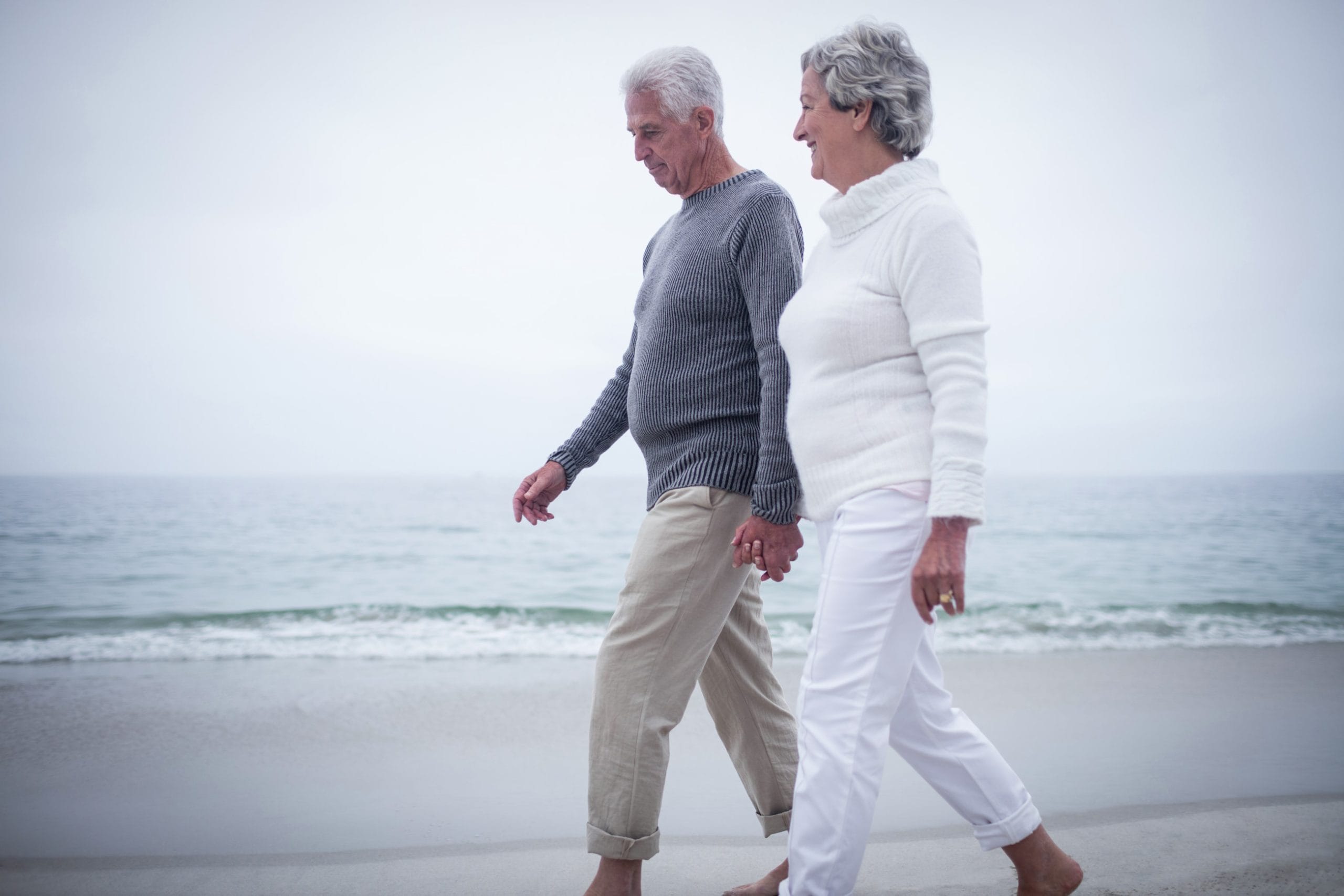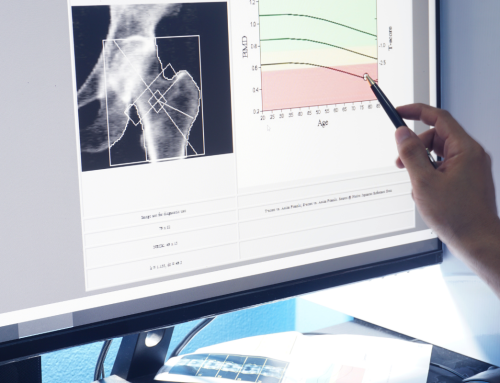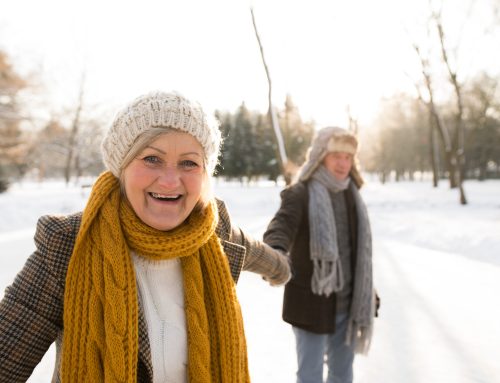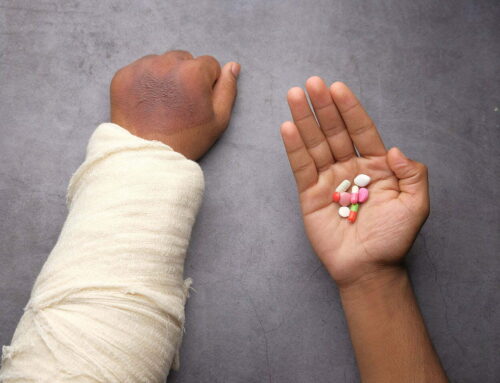
Bone strength doesn’t get as much attention as heart health or cholesterol—but it should. After age 50, bone density naturally begins to decline, and even small losses can add up over time.
Taking a proactive approach to support your bone health is one of the best things you can do for your quality of life now and for decades to come. There are practical, non-invasive ways to support your bone health and reduce your risk of future problems. One of the most important is understanding your bone mineral density (BMD)—a key indicator of how strong your bones are, and how well they can support you as you age.
What Is Bone Mineral Density (BMD) and Why Does It Matter?
Bone Mineral Density (BMD) refers to the amount of mineral (mostly calcium) contained within a specific area of bone. It’s one of the key ways doctors assess how strong your bones are. A higher BMD typically means stronger, more resilient bones, while a lower BMD suggests increased risk for fractures and conditions like osteopenia and osteoporosis.
In Canada, BMD scores are often used to:
- Diagnose bone conditions like osteoporosis
- Estimate fracture risk using tools like the CAROC score
- Track progress if you’re managing bone loss or treatment over time
Want to learn more about bone density?
Here’s a full breakdown of what BMD means.
How Bone Loss Progresses with Age
Bone mineral density peaks between the ages of 25 and 30. After that, the natural balance between bone building and bone breakdown starts to shift. Over time, bone loss begins to outpace new bone formation.
This process happens to everyone, but it tends to accelerate with age and more noticeably for women after menopause. That’s because estrogen plays a major role in maintaining bone structure, and when estrogen levels drop, bone breakdown speeds up.
Men also lose bone mass with age, though typically at a slower rate due to more gradual hormone changes. One study found that over a 4-year period, women lost between 3.4% and 4.8% of their BMD, while men lost between 0.2% and 3.6%—a clear sign of how quickly this shift can happen.
While age-related bone loss is natural, it isn’t something to ignore. The earlier you support your bones, the more you can do to maintain strength and prevent complications later in life.
How Hormones, Inflammation, and Medications Affect Bone Health
Low bone density isn’t always caused by aging alone. Hormones, chronic inflammation, and even common medications can all affect how your bones grow, repair, and break down over time.
For example, estrogen plays a major role in regulating bone turnover. After menopause, estrogen levels drop sharply, leading to an increase in the activity of cells that break down bone. This accelerates bone loss, especially in women during the first few years after menopause.
Inflammation also plays a role. Inflammation from chronic conditions like rheumatoid arthritis, gum disease, or even recovery from joint replacements can trigger inflammatory responses that weaken bone over time.
Certain medications are known to affect bone mineral density (BMD) as well. These include:
- Glucocorticoids (commonly used for autoimmune conditions)
- Proton pump inhibitors (used for acid reflux)
- Anti-epileptic drugs
- SSRIs (antidepressants)
- Loop diuretics
- Hormonal therapies for cancer
If you’ve experienced bone loss and use any of these medications or have an inflammatory condition, it’s worth discussing bone health support options with your doctor, including non-invasive tools like Marodyne LiV that may help protect your skeletal strength.
Bone Loss after Injury or Surgery
Bone loss during recovery is more common than most people realize. Whether it’s due to a fracture, joint replacement, or extended bed rest, periods of immobility can lead to rapid bone loss, especially in older adults. This condition is sometimes referred to as post-traumatic osteoporosis (PTO)—a type of bone weakening that results from inflammation and lack of regular movement.
While treatment often includes calcium and vitamin D, physical therapy, or medications, some people prefer to explore non-pharmaceutical options, especially if they're in early recovery or want to avoid drug side effects.
This is where Marodyne LiV may offer support. Its low-intensity vibration (LiV) therapy gently stimulates the bones and muscles while you stand on the device, helping to maintain bone density and neuromuscular responsiveness without adding strain during a fragile recovery period.
Balance, Muscle Strength, and Fall Prevention
Muscle loss, poor balance, and low bone density often go hand in hand—especially as we age. Together, they increase the risk of falls, which are a leading cause of injury-related deaths in older adults. But the issue goes beyond physical risk. The fear of falling can lead people to avoid movement entirely, which only worsens muscle and bone decline over time.
Exercise programs like Pilates and Tai Chi have been shown to improve posture, flexibility, and balance, helping with fall prevention. However, they’re not always accessible, especially during recovery or for those with limited mobility.
This is where Marodyne LiV plays a unique role. Its gentle vibration therapy activates the body’s natural balance systems, supporting muscle responsiveness and neuromuscular coordination—major factors in preventing falls and maintaining confidence in daily movement.
The Science and Origin of Low-intensity Vibration (LiV)
Low-intensity vibration (LiV), the technology behind Marodyne LiV, was born out of NASA’s Vibe Project. Dr. Clinton Rubin and his team set out to solve the problem of skeletal deterioration in zero gravity. They discovered that low-intensity mechanical signals (similar to those naturally generated by the body) could help maintain bone density and neuromuscular balance.
Today, that innovation is available in a home-use device designed for real-world conditions. Backed by clinical research, Marodyne LiV is a low-intensity vibration (LiV), non-invasive bone health solution that delivers gentle vibration to stimulate bone and muscle activity.
Marodyne LiV is suitable for a wide range of people, including:
✓ Those with early bone loss or a family history of low BMD
✓ People recovering from injury or surgery, especially during limited mobility
✓ Individuals on medications that reduce bone density (such as steroids and hormone therapies)
✓ Mobility-limited users who can’t engage in high-impact exercise but want to improve balance and bone strength
Why Marodyne LiV Works for a Range of Bone Health Needs
Marodyne LiV isn’t just for people with diagnosed osteoporosis. Its gentle, non-invasive support makes it a helpful option for a wide range of individuals managing or trying to prevent low bone density.
Here’s how LiV can fit into different scenarios:
→ Prevention (early bone loss or family history)
Adults with a family history of low BMD or early signs of bone thinning can use Marodyne LiV to maintain bone density and reduce long-term risk.
→ Post-injury or surgical recovery
During periods of limited mobility, like after joint replacement or a fracture, vibration therapy offers a way to stimulate bone activity and help maintain bone density without physical exertion.
→ Medication-related bone loss
Certain medications, such as corticosteroids or cancer hormone therapies, are known to weaken bones over time. Marodyne LiV offers a supportive, drug-free complement for protecting skeletal health.
→ Limited mobility or exercise intolerance
For individuals who can’t engage in high-impact activity, Marodyne LiV supports muscle responsiveness, balance, and stability—three key factors in fall prevention and long-term independence.
Support Your Bones Today—without Strain, Stress, or Guesswork
Whether you're managing early bone loss, recovering from surgery, or simply looking to protect your strength as you age, Marodyne LiV offers a gentle, science-informed way to support your skeletal health right from home.
📍Available in Canada
🕒 Just 10 minutes a day
👣 No exertion required
Connect with the Marodyne team to explore whether LiV therapy is the right fit for you.




 Black Friday → Christmas Sale! Save $300 + Free Shipping
Black Friday → Christmas Sale! Save $300 + Free Shipping 